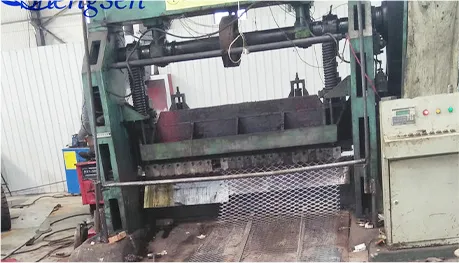-
 Phone:
Phone: -
 Email:
Email:

chain link fence repair
Chain Link Fence Repair A Comprehensive Guide
Chain link fences are a popular choice among homeowners and businesses due to their durability, affordability, and versatile applications. However, like any other type of fencing, they can suffer from wear and tear over time. This article provides a guide on how to repair a chain link fence effectively, ensuring it remains functional and aesthetically pleasing for years to come.
Understanding the Basics
Before diving into the repair process, it's essential to understand the components of a chain link fence. The primary parts include the fabric (the mesh), the posts (vertical supports), tension wire (for stability), and various fittings (such as brackets and ties). Knowing these elements will help you identify the source of the problem and execute the necessary repairs effectively.
Common Issues with Chain Link Fences
The most frequent problems encountered with chain link fences include
1. Torn or Rusted Fabric Over time, the fabric can tear due to weather conditions, physical impact, or corrosion. 2. Loose Posts Posts may become unstable, particularly if the soil around them erodes or if the concrete footings break down.
3. Damaged or Missing Fittings Fittings and ties can rust, break, or become loose, leading to slumping or sagging sections of the fence.
Tools and Materials Needed
Before starting the repair, gather the necessary tools and materials
- Wire cutters - Pliers - Wrench - Replacement chain link fabric (if needed) - Tension wire - Fence ties - Concrete mix (for posts) - Paint (if rust is present)
Step-by-Step Repair Guide
1. Assess the Damage
Inspect the entire fence to identify the areas that require repair. Look for rust spots, tears in the fabric, or instability in posts. Determine whether you can patch the fabric or if a complete replacement is necessary.
chain link fence repair

2. Repairing Torn Fabric
If you find small tears in the fabric, you can often repair them without replacing the entire section. Here’s how
- Cut Out the Damaged Section Use wire cutters to remove the damaged fabric. Be careful to cut it in a way that maintains the integrity of the surrounding fabric. - Insert a New Section Use a replacement chain link piece of the same gauge and weave. Attach it to the existing fabric with wire ties or chain link ties, ensuring it’s secure.
3. Fixing Loose Posts
If a post is leaning or feels unstable
- Check the Anchor If the post is set in concrete, inspect the footing. If it's broken, you'll need to dig out the old concrete and pour a new footing. - Reinforce if Necessary Even if the concrete is stable, you can use braces to support the post temporarily until the concrete sets if you poured a new footing.
4. Replacing Damaged Fittings
For rusty or broken fittings
- Remove Old Fittings Use a wrench to detach any damaged hardware.
- Replace With New Hardware Install new fittings and align the fabric properly. Secure everything tightly to prevent future issues.
Final Touches
Once the repairs are made, consider applying a rust-resistant paint to any exposed metal to prolong the life of the fence. A little maintenance can make a big difference in durability.
Conclusion
Repairing a chain link fence is a manageable task that can save you money compared to hiring a professional. With the right tools and a bit of patience, you can restore your fence to its former glory. Regular inspections and maintenance will help prevent major repairs down the road and keep your property secure and looking great. Whether dealing with rust, tears, or loose posts, an effective repair can extend the lifespan of your chain link fence, ensuring it remains a reliable barrier for years to come.
-
Wire Mesh for Every Need: A Practical SolutionNewsJul.25,2025
-
Steel Fences: Durable, Secure, and Stylish OptionsNewsJul.25,2025
-
Roll Top Fencing: A Smart Solution for Safety and SecurityNewsJul.25,2025
-
Cattle Farm Fencing Solutions for Maximum SecurityNewsJul.25,2025
-
Affordable Iron Binding Wire SolutionsNewsJul.25,2025
-
Affordable Galvanized Wire SolutionsNewsJul.25,2025
-
Wire Hanger Recycling IdeasNewsJul.25,2025








